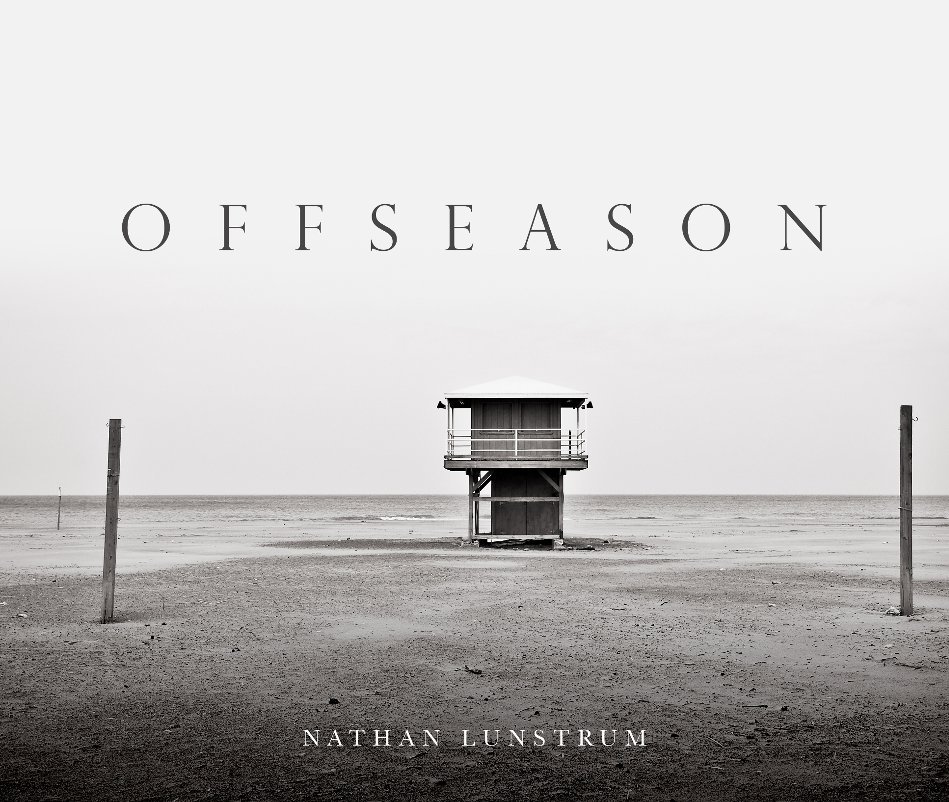About the Book
What happens after everyone goes home? The picnickers pack their baskets and fold their umbrellas. They shake the sand from the beach blankets, put away the plastic buckets and stack the trowels, moor the boats. The lifeguard towers and summer cabins are shuttered, the swimming buoys drawn to shore. The vendors lock and wheel away their coolers. The carousel stops its spinning and the Ferris wheel stills.
Now the temperature begins to drop and the days shorten; the sky pales and the clouds thicken as if calcifying against the horizon. The rain begins and then snow. Ice builds up casings the color of milk glass around the lighthouses and legs of piers. Wind blows. And we, like Persephone, withdraw for the season, leave the outside in favor of our warm living rooms and kitchens, our quilts and socks and mugs of tea.
But what are we missing while we sit nestled in our winter retreats? Were we to temporarily forgo our comfort and step beyond our heat-controlled homes and cars and offices, we would find outside changed, though not, perhaps, as we’d expect. While holiday songs and popular winter lore would have us believe in a landscape subdued and beautified by blankets of snow and filigrees of frost, this picture is not entirely accurate. Nor is the exaggerated image of a violent and terrifying season our cultural mythologies tend to favor. In such stories—be they romantic or disastrous—we construct a particular vision of the landscape for the sake of our fictions.
It is only when we pack away these fictions that we find the lovelier, wilder truth: a landscape neither tamed nor savage, neither fully known nor exactly alien. In winter the wind and water, the snow and sand drift back into the spaces we claim and domesticate during the warmer months. Swing sets poke through displaced banks of beach sand, icicles form and grow like thick barnacles against the sides of seaside pilings, snow buries the iron barbeques at the city park so that they stand like strange, white hoodoos beside the roofed picnic shelters.
In the off season more than any other time, our public landscapes become liminal zones between the control of our domesticity and the abundant riot of the landscape itself; and out of this juxtaposition and commingling comes the unexpected, the new vision.
Now the temperature begins to drop and the days shorten; the sky pales and the clouds thicken as if calcifying against the horizon. The rain begins and then snow. Ice builds up casings the color of milk glass around the lighthouses and legs of piers. Wind blows. And we, like Persephone, withdraw for the season, leave the outside in favor of our warm living rooms and kitchens, our quilts and socks and mugs of tea.
But what are we missing while we sit nestled in our winter retreats? Were we to temporarily forgo our comfort and step beyond our heat-controlled homes and cars and offices, we would find outside changed, though not, perhaps, as we’d expect. While holiday songs and popular winter lore would have us believe in a landscape subdued and beautified by blankets of snow and filigrees of frost, this picture is not entirely accurate. Nor is the exaggerated image of a violent and terrifying season our cultural mythologies tend to favor. In such stories—be they romantic or disastrous—we construct a particular vision of the landscape for the sake of our fictions.
It is only when we pack away these fictions that we find the lovelier, wilder truth: a landscape neither tamed nor savage, neither fully known nor exactly alien. In winter the wind and water, the snow and sand drift back into the spaces we claim and domesticate during the warmer months. Swing sets poke through displaced banks of beach sand, icicles form and grow like thick barnacles against the sides of seaside pilings, snow buries the iron barbeques at the city park so that they stand like strange, white hoodoos beside the roofed picnic shelters.
In the off season more than any other time, our public landscapes become liminal zones between the control of our domesticity and the abundant riot of the landscape itself; and out of this juxtaposition and commingling comes the unexpected, the new vision.
Features & Details
- Primary Category: Arts & Photography Books
- Additional Categories Coffee Table Books
-
Project Option: Large Format Landscape, 13×11 in, 33×28 cm
# of Pages: 68 - Publish Date: Jun 30, 2010
- Language English
- Keywords Indiana, Michigan, Art, Fine
See More
About the Creator
Nathan Lunstrum
Seattle, WA
Nathan Lunstrum grew up in the Cascade foothills of Washington State. He earned an MFA in photography from WSU in 2005. He currently lives with his family outside of Seattle.

